Are natural, eco-friendly postharvest solutions possible? Research suggests they might be, but how effective can they be?
If you read my article on postharvest techniques, you may recall that I hinted at researching and experimenting with plant-derived and/or more gentle solutions. Well, my friend, I’ve been deep down this rabbit hole, and I want to take you with me. While it’s still early in my own research, I want to share some of what I’ve learned!
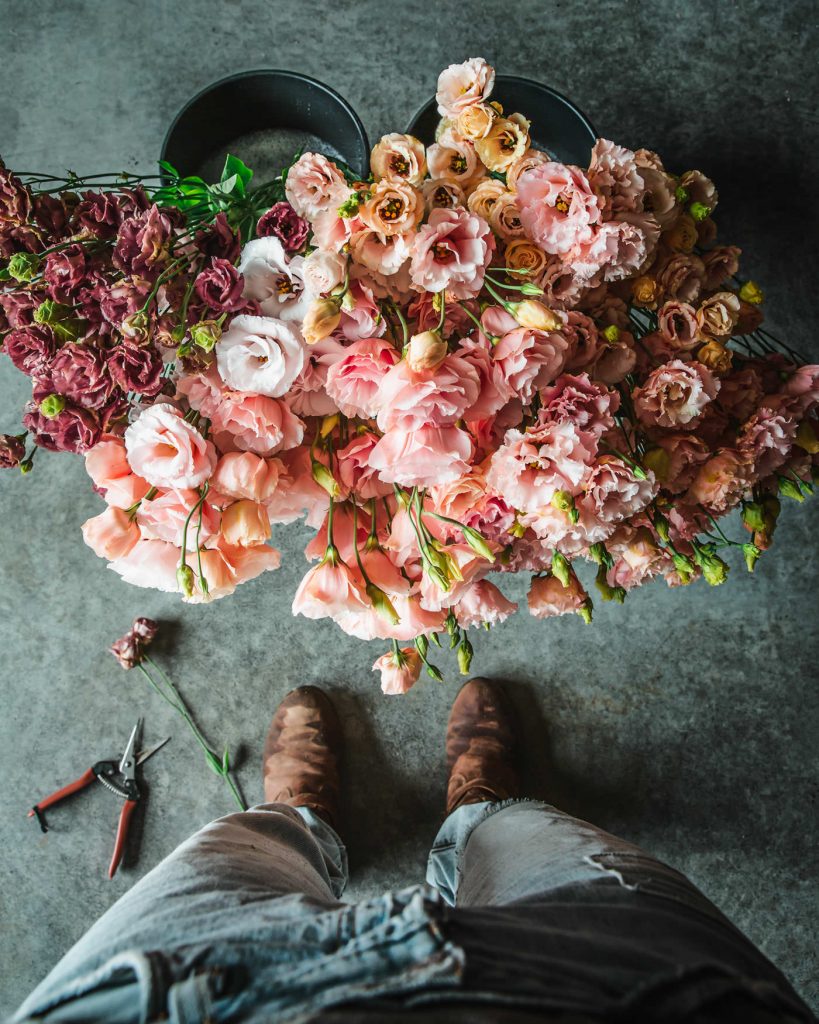
Commercial Postharvest Solutions (Solution vs Trade-Offs)
Commercial postharvest products are considered an essential tool in the industry. While one can certainly get good vase life without them, they’ve been shown to extend vase life by more than 60 percent. They are ideal for mantaining vibrant colors, as well keepings as petals plump.
The trade-off? While postharvest products are industry standard, they are not approved for organic production. Personally, I’m not dogmatic about, well, anything. In fact, I love this quote by Thomas Sowell: “There are no solutions. There are only trade-offs.”
It’s a personal choice that each farm/florist has to make. While we grow everything organically, we are not certified organic on our farm. We do use postharvest products, at least for now. I first learned about these through Floret/Erin Benzakein, and I do find they make a difference.
Our customers have communicated that they prefer this balanced approach of gentle growing practices combined with a better-quality and longer-lasting product. That said, I think the industry has a lot of opportunity for improvement here, and I cannot imagine a customer not preferring a more-natural product. I mean, I would love a more-natural product, even if the trade-off is slightly-less effective. And maybe it doesn’t have to be!
SO anyway, I did what I do. I’ve dedicated a significant amount of time researching this topic and found a lot of interesting possibilities. Today, I thought I’d share some of my findings related to essential oils according to recent research. I’ve also included some tips if you prefer not to use any postharvest products at all.
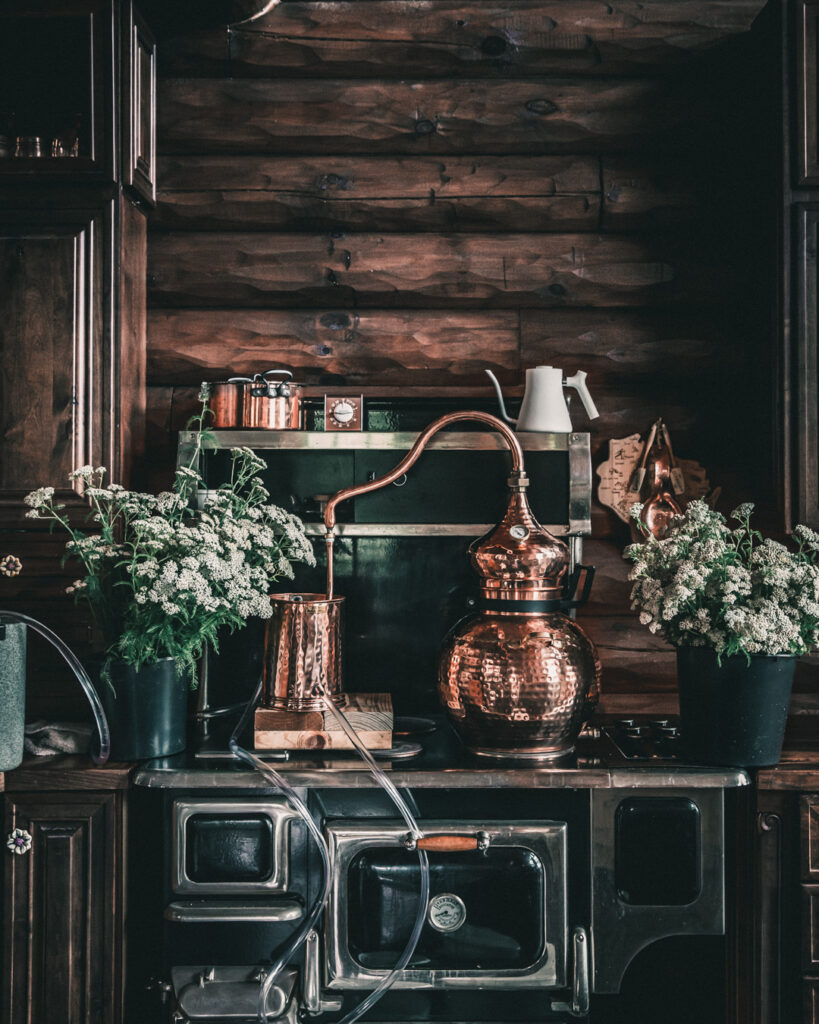
Essential Oils as Postharvest Solutions
Essential oils are concentrated compounds extracted from plants. They are typically extracted from blossoms, seeds, fruits, fruit peels, leaves, stems, barks, wood, and roots. They are extracted through steam distillation, cold pressing, resin cutting and resin tapping. We’ve even distilled our own!
Essential oils are natural, generally safe, environmentally friendly, and contain biodegradable compounds (Vehniwal). Recent research suggests they could be a suitable alternative for the prolongation of vase life in several cut flowers due to their antimicrobial properties. Below I’ve included those I’ve found notable.
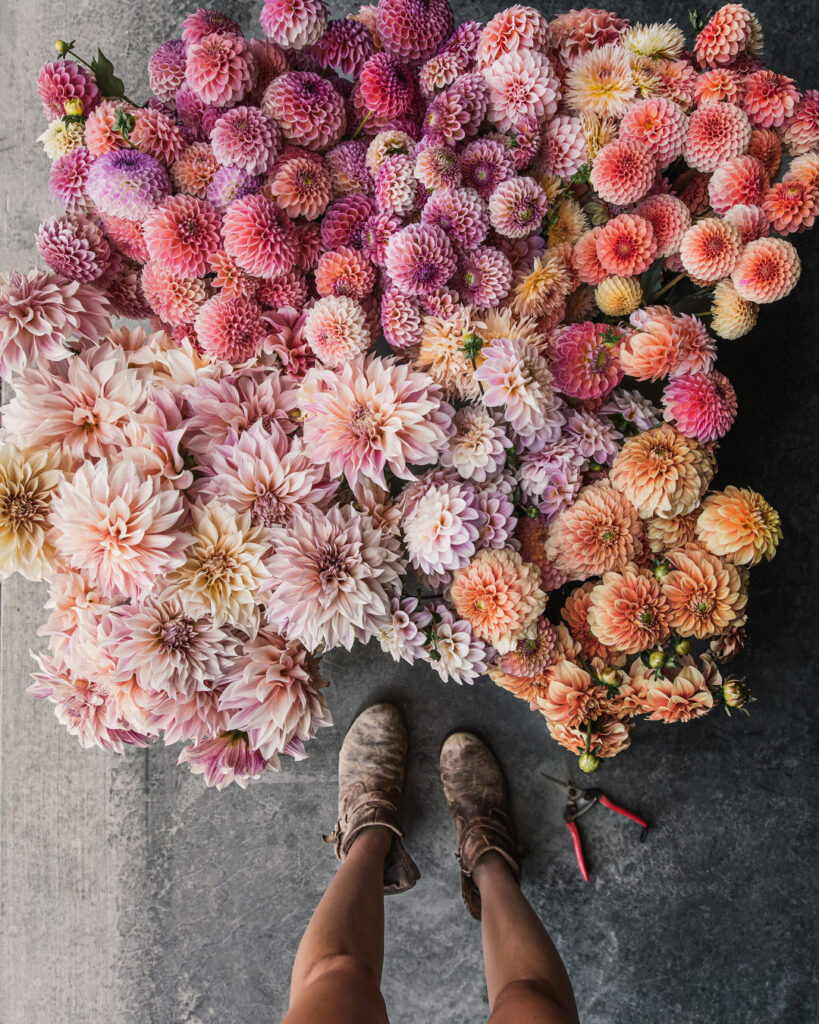
Notable Essential Oils
Piper extract showed complete inhibition of microbial growth in vase solutions, delayed bent neck, reduced ethylene production and maintained freshness of leaves in roses (Jitareerat et al).
Adding lemongrass essential oil extended the vase life of gladiolus by two to four days. The team observed that it reduced microbial blockage at the stem end, had lower levels of genes associated with aging, and higher expression of antioxidant genes (Thakur et al).
Researchers investigated the impact of essential oils such as tea tree oil (TTO), pumpkin seed oil (PSO), Moringa seed essential oils (MEO), and Eucalyptus oils (EEO) on cut carnations. The findings revealed that the longest vase life and the maximum total water solution uptake in cut carnation were achieved when treated with TTO or PSO (Soliman et al).
Another study looked at the impact of essential oils on lisianthus. Australian Cheesewood, Rosmary oil, and Zataria oil had vase life of 15.8, 15.6 and 15.5 days, respectively, which was significantly higher than the control (distilled water 10.3, ethanol 10.8 and sucrose 3% 12.1) (Kazemi et al).
The essential oil of Mentha spicata treatment almost doubled the vase life of cut roses (Salmi et al).
Lilium flowers treated with peppermint and thyme oil increased the vase life to 15 days (Nadukeri) .
Zataria multiflora and Echinophora platyloba essential oils increased vase life, petal water content, leaf relative water content and SPAD value (used to measure chlorophyl), significantly, in lisianthus. They reported a 95% increase versus the control (Bayat et al).
Geranium essential oil significantly increased the vase life of cut chrysanthemum (Dendranthema grandiflorum L.) up tp 18.41 days (Davood et al).
Nine essential oils extracted from anise, cumin, geranium, common lavender, sage, sweet basil, cinnamon , blue gum, and lemon grass were tested for their antimicrobial effects on the vase life of cut roses. The study indicated that lavender, geranium and anise increased vase life, fresh weight and water uptake in addition to reducing transpiration. They suppressed blockage of xylem vessels by reducing bacteria and fungi growth (Shanan).
Essential oils prolonged cut carnation longevity by limiting the xylem blockage and enhancing physiological and biochemical levels. Flowers showed the longest vase life and maximum absorption of the preservative solution when treated with thyme oil, followed by marjoram oil, anise oil and geranium oil.
Rosemary essence along with cola, peppermint, and apple extract were also found to be effective as natural ingredients for cut flower preservation (Babarabie et al).
Ajowan, dill, carvacrol, summer savory, and clove essential oils were also found to be effective (Nadukeri).
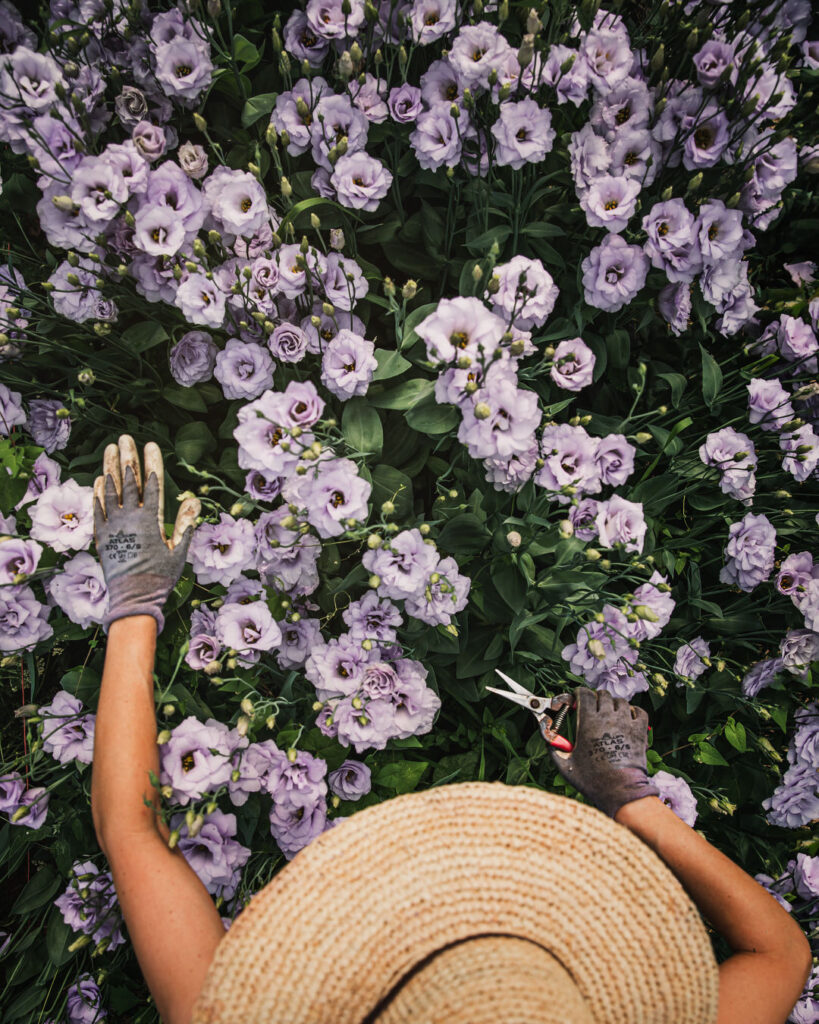
Experiments
While this is all really exciting, I want to call out that essential oils are just one key to the puzzle! Matt and I have a slew of experiments ready for trial this season, and I’m excited to see what we learn. Of course, this will be the first place I share in depth🙂 I’d love to know if you decide to run your own experiments and what you find too!
Another Option: Not Treating Flowers
Not treating your flower is also a completely-viable option! Truly, the number one thing you can do for your flowers is cleanliness. Even the best postharvest solution cannot overcome poor sanitation. Clean buckets and tools are absolutely key! Similarly, employing the harvesting tips and tricks can drastically improve vase life (read a breakdown of these here).
While most cultivars do seem to benefit from postharvest solutions, some studies suggest that some do not. For example, some studies found that hydrating solutions had no effect or reduced the vase life of some celosia and china asters. See Harvest & Postharvest Cheat Sheet for recent research.
Ultimately, it’s all about trial and error and doing the best with the current information available. The ephemeral quality of flowers is what makes them so special. Fleeting moments are meant to be enjoyed to the fullest 🙂
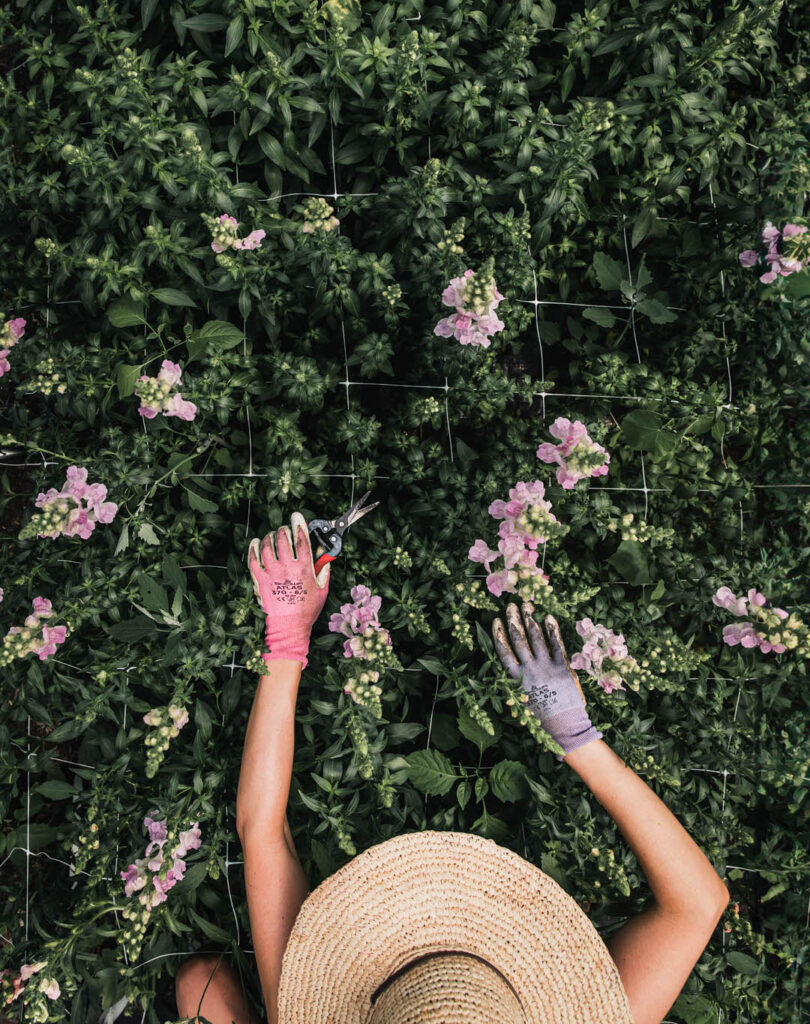
Sources
- Babarabie M., Zarei H., Varasteh F.. Potential of increasing the vase life and improvement of some physiological characteristics of Alstroemeria cut flowers by using non-harmful compounds environmentally. Journal of Chemical Health Risks. 2016;6(1):1–8.
- Bayat H., Geimadil R., and Saadabad A.A. Treatment with Essential Oils Extends the Vase Life of Cut Flowers of Lisianthus (Eustoma grandiflorum). Iranian Society of Medicinal Plants. 2013
- Davood H., Ohammad Zarchini M., Hajivand S., Safa Z., Zarchini S. Effect of antibiotics and essential oils on postharvest life and quality characteristics of Chrysanthemum cut flower. J Ornal. Plt. 2013; 3(4):259- 65.
- Gururani M.A., Atteya A.K., Elhakem A., El-Sheshtawy A.A., El-Serafy R.S. Essential oils prolonged the cut carnation longevity by limiting the xylem blockage and enhancing the physiological and biochemical levels. PLoS One. 2023 Mar 7;18(3):e0281717. doi: 10.1371/journal.pone.0281717. PMID: 36881583; PMCID: PMC9990951.
- Jitareerat P., Ruenroengklin N., Uthairatanakij A., et al. Use of herbal extracts for inhibiting microbial growth in holding solutions of cut-rose. Acta Horticulture. 2007;804:291–296.
- Kazemi S., Asil M.H., and Ghasemnezhad M. Physiological effects of some essential oils in comparison with 8-hydroxyquinoline in cut Lisianthus flowers (Eustoma grandiflorum L.). Iranian Journal of Horticultural Science, (Pe185-Pe195), University of Tehran, 20143411741, Iran, 45, (2)
- Nadukeri, S. “Significance of Essential Oils and Herbal Extracts on Vase Life of Cut Flowers: A Review.” Journal of Pharmacognosy and Phytochemistry, 2018.
- Salmi, M. R. S., Hoseini, M. F., Heidari, M., & Daneshvar, M. H. (2018). Extending vase life of cut rose (Rosa hybrida L.) cv. Bacara by essential oils. Advances in Horticultural Science, 32(1), 61–70. https://www.jstor.org/stable/26525422
- Shanan N. Application of essential oils to prolong the vase life of rose (Rosa hybrid L. cv.‘Grand’) cut flowers. Journal of Horticultural Science and Ornamental Plants. 2012;4(1):66–74.
- Soliman, Dina & El-sayed, Iman. (2023). Study postharvest characteristics, chemical composition and antimicrobial activity of Dianthus caryophyllus L., cut flowers using some essential oils. Ornamental Horticulture. 29. 37-47. 10.1590/2447-536x.v29i1.2540.
- Thakur, M., Verma, V., Chandel, A. et al. Lemon grass essential oil improves Gladiolus grandiflorus postharvest life by modulating water relations, microbial growth, biochemical activity, and gene expression. Sci Rep 13, 2630 (2023). https://doi.org/10.1038/s41598-023-28829-0
cLICK FOR Comments +